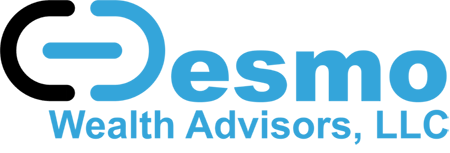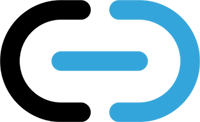Tune Up Your Retirement Plan!
With open enrollment approaching, it’s a good time to think about retirement planning, and a great chance to practice taking the long view. Consider some simple numbers about the importance of the long term for retirement. Say you start saving $10 a day from the day you turn 22 until you retire at age 65. Assuming an average return of 7% per year, you will retire with an additional $904,384. Yes, who knows if you’ll get 7%, but historically that’s not outside the norm with a moderate portfolio of stocks and bonds (like a 60/40). In contrast, if you wait until age 30 to start saving the $10, you end up with $504,656, assuming the same 7% return. That’s almost $400,000 less. Imagine the freedom the $400,000 can give you. You can retire earlier or you can spend more on things that matter to you. That’s how valuable the long view is.
OK, you ask, who saves that consistently from their very first paycheck? Not many people, but we can draw a number of lessons from this example.
Get on the right track today
The first lesson is that small amounts over long periods of time can make a big difference. This means that when making decisions about retirement, it is important you do some homework, or ask an advisor to help you. Listening to the recommendations of your HR person or your colleagues may be a starting point, but make sure that advice works for your situation.
Don’t stress out if you can’t save as much as you would like. Starting out early is more important than how much you save, at least at first. Getting started, even with low contributions, can help you develop good habits. You’ll be able to find ways to save more as your compensation increases. If you are switching jobs, don’t cash out your savings, or you may lose the progress you made. Make sure to transfer your balance (through a roll-over) to your new plan, so you have all your savings in one place.
Don’t leave free money on the Table
Read and understand your plan’s employer match. Many employers will match at least part of your contribution, up to some limit. Matching 50% of your contributions up to 6% of your salary is a common approach. With this arrangement, if you make $100,000 and contribute $4,000 (4%), the company contributes $2,000 (50% of your contribution). In this case, you’d be leaving $1,000 on the table, which can mean a lot over a long period of time. By increasing your contribution to $6,000, the company would increase its amount to $3,000, for a total contribution of $9,000. At this point you have reached the max company contribution. Maximizing your employer’s match should be your first goal. If you are having a hard time doing it, study your spending patterns to find ways to increase your contributions to that amount. If that’s not achievable, start by contributing any amount you are comfortable with, and automate that level of saving. Then make it a goal to increase your savings percentage over time.
How Much Should I Save?
You may have heard that in a good plan you should start with a goal. But if you are just starting out, it’s hard to know what your needs are going to be 30 or 40 years from now. So don’t worry about setting a goal today. Save as much as you reasonably can and follow the rules above. For more established households, one way to set a goal is to start with how much you make now, then subtract spending items you will not have when you retire, like saving for retirement, mortgage payments, etc. A simple rule of thumb is to take 80-90% of this amount as your starting income need in retirement. Social Security will cover some of this need. Covering the rest is the role of your savings. Use a calculator like this one to help you estimate how much income your savings may be able to support in retirement (full disclosure: I lead the development of this calculator in my prior career). You can change your savings, retirement date, or your goal to estimate what you need to be on track. Remember that you can contribute up to $19,000 for 2019, and $19,500 for 2020 (plus an additional $6,000 for 2019 or $6,500 for 2020 if you are 50 or older). If you believe you need to contribute more, it’s time to think about other sources besides the 401k plan.
Roth Vs. Traditional
Some 401k plans let you contribute to both a Roth and a traditional account. Roth contributions are after tax contributions, whereas traditional 401k contributions are pre-tax. Say you are in the 22% tax bracket. A $1,000 contribution to a traditional account is not taxable income. If instead you want to direct the same amount to a Roth, you’ll have a tax liability of $220, so your effective contribution will be $780. However, traditional 401k distributions in retirement are taxable income, whereas Roth distributions are tax free. Normally, you want to be taxed at the lowest possible rate during your lifetime. So, if you are in low tax brackets, Roth contributions make sense, because it’s unlikely your tax bracket will be even lower in retirement. As your income rises, directing some of the contributions to a traditional 401k can help you lower your marginal tax rate. So devote more to a traditional 401k as your tax bracket increases.
Fill your buckets
Because of the different tax treatment across saving accounts, including their effect on the taxability of social security benefits, it is useful to have multiple buckets to draw from in retirement. If you can’t contribute to a Roth 401k or a Roth IRA, consider converting part of your traditional IRA account into a Roth over time. Everyone with earned income can contribute to a traditional IRA, and if your spouse is covered by an employer plan, you can contribute even if you don’t have earned income. Your Health Savings Account, when properly considered within a plan, can be an excellent source of funds to pay for supplemental health or long-term care insurance in retirement.
After Tax 401k Contributions
Some 401k plans allow you to contribute after tax money to your 401k account, up to the annual total contribution limit for employer and employee combined. This can be a useful strategy for higher earners. Say you contribute $19,000, your employer contributes $5,000, so you have 24,000 in total contribution. For 2019 the total contribution limit (employer + employee) is $56,000. So you have $32,000 in potential contributions left. If your company plan lets you, you can contribute up to that amount after tax. The catch is that the earnings from these contributions are taxed as ordinary income (as opposed to long term cap gains). So, why would you do it? The answer is that you can roll over those after tax contributions to a Roth account over time, even if you can’t contribute to a Roth IRA directly (hence another name for this strategy is mega backdoor Roth).
Investment Selection
It’s hard to say much about investment selection without knowing the options in your plan. But you should spend some time making the right elections, as mistakes here can derail your plan. Study your plan and the materials provided. What is the default option if you don’t make any investment election? Target date funds are becoming the option of choice, and the ones chosen by your company may be OK for you. But because these funds that are designed for average demographics, their risk characteristics may not work for you, particularly as you approach retirement. If you think you can build a portfolio from the line up of funds offered by the plan, make sure you take the right amount of risk for your goals, the stage of your career, and your risk preferences. Diversify broadly across global markets and, as always, choose low cost funds (you may find our guide here useful).
As you can see, making plan elections right for YOU requires some careful thinking. In our post we can give you some useful ideas, but seek expert help for best execution. The consequence of seemingly small mistakes, as our simple example illustrates, can be meaningful. Part of the value of hiring a trusted financial planner is that you can avoid costly mistakes while taking advantage of opportunities you may not know about.
At DESMO, we believe everyone should have access to a good plan, so we offer packages focused on getting you started with retirement planning, even if you aren’t ready for a comprehensive plan.
Until next time!
Massi De Santis is an Austin, TX fee-only financial planner. DESMO Wealth Advisors, LLC provides objective financial planning and investment management to help clients organize, grow and protect their resources throughout their lives. As a fee-only, fiduciary, and independent financial advisor, Massi De Santis is never paid a commission of any kind, and has a legal obligation to provide unbiased and trustworthy financial advice.





